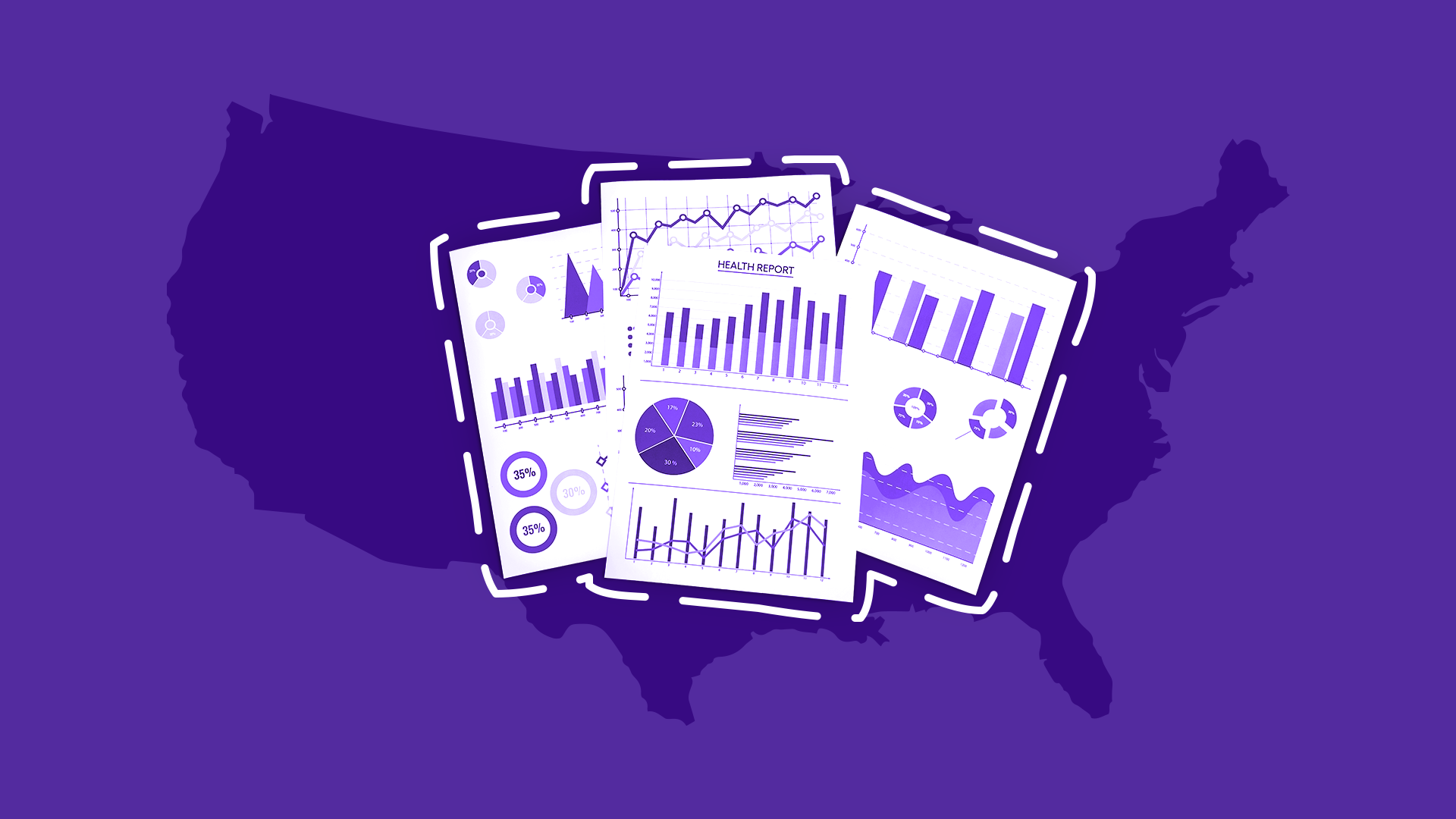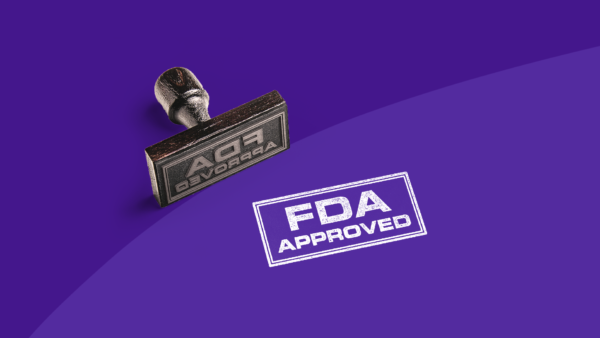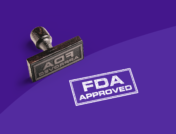How common is prescription drug use? | Prescription drug stats | Prescription drug price trends | Prescription drug abuse | FAQs | Research
Prescription drugs help people all around the world find treat medical conditions, but they can also cause harm if they’re misused. Let’s take a look at some prescription drug statistics to learn how common prescription drug use is, the prevalence of prescription drug misuse, and how much prescription drugs cost.
How common is prescription drug use?
The coronavirus pandemic has increased prescription drug use and impacted the way people get their medications. In the past year, SingleCare saw increases in prescription fills among many drugs, especially drugs thought to treat COVID-19, supplements, antidepressants, and stimulants for attention-deficit hyperactivity disorder (ADHD):
- 525% increase in fills for hydroxychloroquine
- 70% increase in fills for generic Lexapro
- 66% increase in fills for vitamin C
- 62% increase in fills for dexamethasone
- 39% increase in fills for ibuprofen
- 31% increase in fills for generic Zoloft
- 27% increase in fills for metformin HCl
- 21% increase in fills for trazodone HCl
- 20% increase in fills for generic Prozac
- 19% increase in fills for vitamin D
- 16% increase in fills for generic Adderall
According to the American Psychological Association, the misuse of opioid pain relievers and stimulants has also risen during the pandemic, as people attempt to cope with conditions like anxiety and depression.
Prescription drug statistics worldwide
- More than 26% of UK adults take prescription medications (Public Health England, 2020).
- About 35% of Australians take prescription medicine every day (Health Direct, 2018).
- In Canada, about 65% of people aged 40-79 take one or more prescription drugs (CDC, 2019).
- More than 39 million people around the world have drug use disorders (United Nations, 2023).
- Pain medications are the most commonly abused prescription drugs (Mississippi State Department of Health, 2021).
- Only 1 in 5 people receive treatment for drug use disorders around the world (United Nations, 2023).
- The global number of opioid users is estimated to be 53 million (United Nations, 2019).
Prescription drug statistics in the United States
- There are more than 20,000 prescription drugs that are approved for marketing (FDA, 2020).
- About 66% of U.S. adults take prescription drugs (Health Policy Institute, 2021).
- About 46% of U.S. adults have taken a prescription drug in the past 30 days (CDC, 2019).
- The therapeutic areas with the highest spending in the U.S. are antidiabetics, oncologics, autoimmune, and respiratory diseases (Statista, 2021).
- The leading drug classes in the U.S. are antihypertensives, pain relievers, and mental health drugs (Statista, 2021).
- The most commonly abused types of prescription drugs in the U.S. are opioids, tranquilizers, benzodiazepines, and prescription stimulants (Journal of Substance Abuse Treatment, 2014).
- The U.S. consumed about 30% of the world’s supply of opioids in 2015 (Politifact, 2017).
- In 2022, 107,081 people died from opioid overdoses (CDC, 2023).
Prescription drug statistics by age group
Prescription drug use tends to increase with age. According to the National Health and Nutrition Examination Survey of 2015-2016:
- 18% of children aged 0-11 years old reportedly used prescription drugs in the past 30 days
- 27% of adolescents aged 12-19 years old reportedly used prescription drugs in the past 30 days
- 47% of adults aged 20-59 years old reportedly used prescription drugs in the past 30 days
- 85% of adults aged 60 or older reportedly used prescription drugs in the past 30 days
(CDC, 2019)
Teen prescription drug misuse statistics
- Prescription drug misuse is highest among young adults aged 18 to 25 (National Institute on Drug Abuse, 2020).
- 1 in 7 teens has taken a prescription drug without a doctor’s prescription (Teens Health, 2018).
- About 4% of high school seniors reported taking Adderall in 2020, and more than 1% reported using Vicodin (National Institute on Drug Abuse, 2021).
- About 4% of Americans aged 12 and older have used prescription pain relievers for nonmedical reasons (SAMHSA, 2105).
- 23% of college students had a lifetime history of prescription drug abuse (Journal of Substance Abuse Treatment, 2014).
RELATED: Preventing teen prescription misuse
Prescription drug statistics by race and ethnicity
- In the United States, prescription drug use is more common among non-Hispanic White persons (50%), followed by non-Hispanic Black persons (45%), Hispanic (37%), and non-Hispanic Asian persons (33%) (CDC, 2019).
- American Indians and Alaska Natives have the highest rates of nonmedical prescription painkiller use (6.9%) followed by Hispanic persons (4.5%), White persons (4.3%), and Black persons (3.6%) (SAMHSA, 2105).
- Opioid misuse is highest among Native American individuals (RAND Corporation, 2021).
Prescription drug price trends
- Prescription drug prices rose by 7.4% in 2022 (Department of Health and Human Services, 2023).
- Among the developed countries, the U.S. has the highest per-capita pharmaceutical spending, which is mostly due to higher drug prices (Statista, 2020).
- The United States spent $603 billion on medicines in 2022 (Statista, 2023).
- Brand-name drugs made up 80% of the money spent on medicine in the U.S. in 2019 (Statista, 2020).
- Pfizer and BioNTech jointly made $59.1 billion in sales of the COVID-19 vaccine in 2022 (Drug Discovery Trends, 2023).
- Humira generated the second most sales revenue, making $21 billion (Drug Discovery Trends, 2023).
- The U.S. spent almost $74 billion on antidiabetic drugs in 2020 (Statista, 2021).
- People 65 and older pay the most for prescription drug expenditures (Health Policy Institute, 2021).
- Annual prescription drug expenditures are 1.5 times higher for adults aged 80 and older than for younger adults (Health Policy Institute, 2021).
- About 37% skipped a medication or refill because it was too expensive (YouGov, 2023).
Prescription drug abuse epidemiology
The increasing prevalence of prescription drug abuse in the United States and globally is considered by many experts to be an epidemic. Statistics indicate that prescription drug use is growing, along with prescription drug misuse. The National Survey on Drug Use and Health estimates that 16.7 million people older than 12 in the U.S. abused prescription drugs in 2012, and 2.1 million people met the criteria for a diagnosis of a substance use disorder related to prescription medications. Prescription drug misuse has increased by 250% over 20 years. According to the CDC, drug overdose deaths have quadrupled since 1999 with a 5% increase between 2018 and 2019. It’s clear that the nonmedical use of prescription meds is prevalent and that it will require continuous effort from doctors, researchers, individuals, and organizations to help combat it.
Preventing prescription drug misuse
Even though prescription drug misuse is common, there are certain things that can be done to help prevent it. Patients, pharmacists, doctors, nurses, and other healthcare workers all have the potential to be contributing factors in a drug misuse incident. It’s possible for doctors to make prescription errors and prescribe the wrong medication or prescribe a medication unnecessarily. It’s also possible for patients to take medications incorrectly which may result in them experiencing side effects or forming an addiction.
RELATED: Medication error statistics
Healthcare professionals
Doctors and pharmacists can help prevent prescription drug misuse by prescribing the correct medication only if it’s absolutely needed and by clearly explaining how to take a medication, any side effects the medication may cause, and by telling the patient about any possible drug interactions or disclaimers. One of the best ways for patients to avoid prescription drug misuse is to take prescribed medications exactly as directed for the minimum amount of time and to avoid the most addictive medications like sleeping pills, anti-anxiety type pills such as Xanax, and stimulants, says Christopher Johnston, MD, chief medical officer at Pinnacle Treatment Centers in New Jersey.
Patients
Patients can help prevent drug misuse by sharing their complete medical history with their doctor and closely following their doctor’s instructions on taking medication. In a healthcare setting where nurses or counselors are involved, these individuals can help prevent drug misuse by recognizing the signs of prescription drug addiction in a patient and by helping them seek treatment.
Organizations
Governments and organizations are also working to prevent prescription drug misuse. The National Coalition Against Prescription Drug Abuse (NCAPDA), for example, is a non-profit that works to prevent drug abuse with community education and legislative action at the local, state, and federal levels. The National Institute on Drug Abuse (NIDA) is a federal agency that’s the world’s largest supporter of drug abuse and addiction research. They distribute their research findings to the general public, policymakers, and researchers to help fight drug misuse. Many other non-profits and institutions help prevent prescription drug abuse in the U.S. and globally.
RELATED: How pharmacists can help prevent prescription drug abuse
Treating prescription drug abuse
According to the National Institute on Drug Abuse, behavioral treatments and medications are the two main drug use disorder treatment categories. Therapy like cognitive-behavioral therapy or group counseling can help people change their thoughts and behaviors that lead to drug misuse. Certain medications can also help treat drug abuse, especially for people misusing opioids. Medications like buprenorphine, naltrexone, and methadone can help diminish cravings and withdrawal symptoms.
If you or someone you know has found themselves in a drug abuse situation, know that there are treatment options out there. Asking for help may be difficult, but could save your life or the life of a loved one. You can call the Substance Abuse and Mental Health Services Administration (SAMHSA) National Helpline at 1-800-487-4889 for free at any time if you need help with a mental or substance use disorder, or you can talk with your doctor or healthcare provider about treatment options.
Prescription drug abuse costs
- Drug abuse costs the U.S. more than $740 billion every year in costs related to crime, lost work productivity, and health care (National Institute on Drug Abuse, 2020).
- Opioid drug abuse costs the U.S. an estimated $78.5 billion every year (National Institute on Drug Abuse, 2020).
- Outpatient detox costs $1,000-$1,500 on average (AddictionCenter, 2021).
- The cost of inpatient rehab can range from $6,000 to $20,000 for a 30-day program. A 60- or 90-day rehab program may cost anywhere from $12,000 to $60,000 (AddictionCenter, 2021).
Prescription drug questions and answers
What percentage of the population takes prescription drugs?
It’s estimated that about 66% of the U.S. population takes one or more prescription drugs.
How many prescription drugs are prescribed each year?
Every year in the U.S., more than 4 billion prescriptions are dispensed. The number of retail prescriptions filled yearly is expected to increase substantially by 2024.
How many prescriptions does the average American take?
Data suggests that among those who take prescription medications, the average number of medications taken is four. More than 131 million Americans take at least one prescription medication.
What country consumes the most prescription drugs?
Research on prescription drug spending suggests that the United States consumes the most prescription drugs. In 2019, the U.S. reported per capita spending of $1,229, whereas Canada only spent $879, Switzerland $894, and France $671.
Prescription drug research
- 2020 drug report: How COVID-19 impacted U.S. prescription medication trends, SingleCare
- Prescribed medicines review, Public Health England
- Take medicines seriously, Health Direct
- Prescription drug expenditure in the U.S. from 1960-2020, Statista
- Total nominal spending on medications in the U.S. from 2000-2022, Statista
- Prescription drug use among adults aged 40-79 in the United States and Canada, Centers for Disease Control and Prevention
- World Drug Report, United Nations Office on Drugs and Crime
- Preventing opioid and prescription drug abuse, Mississippi State Department of Health
- Fact sheet: FDA at a glance, FDA
- Prescription drugs, Health Policy Institute
- Prescription drug use in the United States, 2015-2016, CDC
- Prescription drug abuse, Journal of Substance Abuse Treatment
- Claire McCaskill cites disproven figure on opioid use, Politifact
- Opioid overdose crisis, National Institute on Drug Abuse
- What is the scope of prescription drug misuse? National Institute on Drug Abuse
- Prescription drug abuse, Teens Health
- Nonmedical use of prescription pain relievers, SAMHSA
- Prescription drug price increases in January 2021, SingleCare
- Racial/ethnic differences in prescription opioid misuse, RAND Corporation
- Total nominal spending on medicines in the U.S. from 2002-2019, Statista
- Affordability of prescriptions remains a consumer challenge, SingleCare
- Costs of substance abuse, National Institute on Drug Abuse
- Cost of drug and alcohol rehab, AddictionCenter
- Understanding the epidemic, CDC
- Prescription drug abuse statistics, NCDAS
- Special points of interest, World Drug Report, UNODC
- More than one-third of Americans have not filled a prescription because of its cost, YouGov











